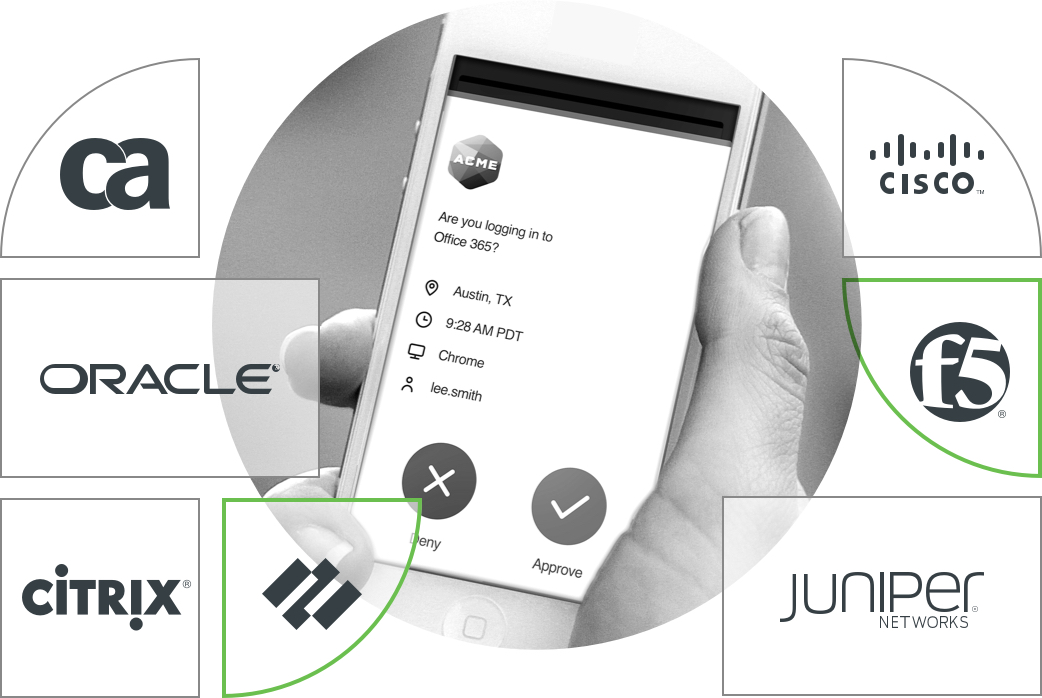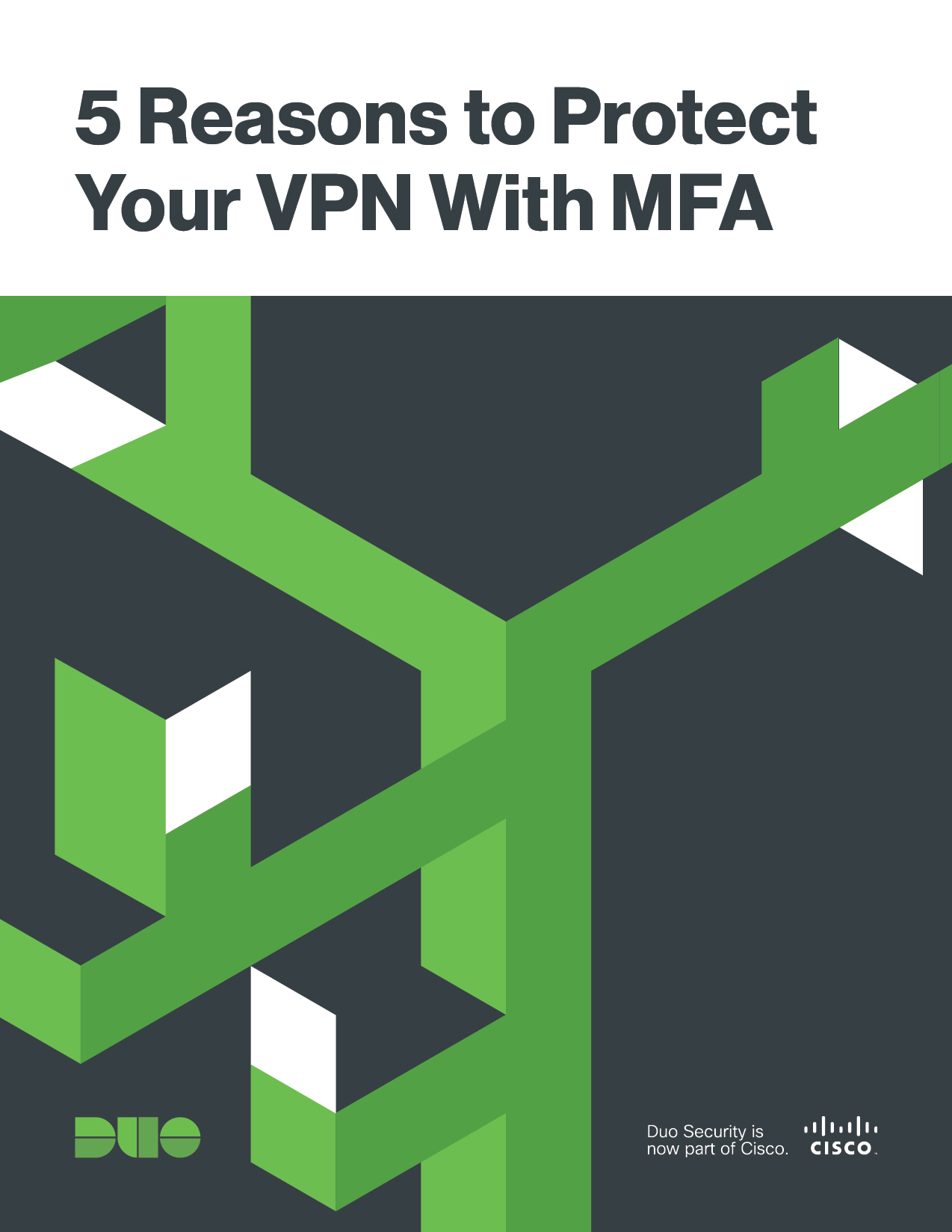Get Top-tier VPN Protection with Duo
Securing your VPN is now hassle-free. Duo provides top VPN protection against viruses and hackers and works with remote access gateways to ensure secure user access from anywhere.
How Does a VPN Provide Protection?
A virtual private network (VPN) extends a company's network to trusted remote users. Think of it as a secure tunnel that data travels through, encrypted and protected from prying eyes.
VPNs are cost-effective ways for businesses to connect remote workers to corporate networks securely while also speeding up connectivity. They enable secure remote access to applications and resources by authenticating users and their devices.
How Important is VPN Protection?
A VPN is designed to protect your data in transit, but most VPNs alone do not offer advanced protection from cyberattacks. Authentication tools like MFA, device visibility, and adaptive access policies can boost your VPN security to help prevent:
Malware and ransomware
Phishing attacks
Security breaches
Unauthorized access

Add an Extra Layer of VPN Protection
Duo verifies user identity with multi-factor authentication (MFA), two-factor authentication, (2FA) and checks the security health of devices even before granting access.
Supporting major remote access gateways and VPN providers, Duo works seamlessly with CA Siteminder, Oracle Access Manager, Juniper, Cisco, Palo Alto Networks, F5, Citrix, and more.
We were incredibly blown away at how our deployment went...this was the easiest deployment we’ve ever done. I’m really impressed. Read the Customer Story
— Ivan Leichtling, Security Manager, Yelp


Duo + AnyConnect
Duo offers top VPN protection for a secure experience. Its MFA works with Cisco ASA VPNs to verify both user identity and their respective device health quotients, even before accessing any applications.
Duo Security includes an IPsec integration that works with Cisco’s desktop VPN client and SSL integrations, keeping desktop, mobile, and hybrid users secure.
Duo + Juniper
Duo integrates seamlessly with your Juniper SA Series SSL VPN appliances and the Junos Pulse client for quick deployment and user provisioning.
Duo’s two-factor authentication (2FA) VPN protection verifies the identity of your users and checks the security health of their devices before they access your applications.
What are the benefits of VPN protection with Duo?
VPN Malware and Virus Protection
A VPN alone can't protect you from today's evolving cyberthreats. But Duo can. Duo's MFA and device trust capabilities offer reliable authentication to counter credential theft, phishing, advanced malware, and unauthorized access attempts.
Build a Zero Trust Workforce
Duo empowers your organization to adopt a zero trust security model by verifying user identities and device health before granting VPN access. Integrating MFA with your VPN not only reduces your risk of breaches but helps meet regulatory compliance seamlessly.
eBook: Zero Trust: Going Beyond the Perimeter
Article: Zero Trust Access Policy Is Complicated. Here's How to Simplify It.
Secure Your Hybrid Workforce
Duo delivers secure remote access across cloud and on-premises applications. Fortify VPN access for your hybrid or remote workforce with consistent policy enforcement, security controls for every application, and flexible options to best fit your access needs.
eBook: The Essential Guide to Securing Remote Access
eBook: Risk-Based Authentication: How Duo Can Reduce Risks For Hybrid Work
Gain Device Visibility
Dive deep into devices accessing your VPN with Duo Device Visibility. Protect your applications by verifying every device's security posture before granting VPN access. Granular device visibility enables adaptive authentication policies and endpoint remediation that prevent the spread of malware and stop risky devices from accessing your resources.
eBook: The Essential Guide to Device Trust in the Enterprise
Get Adaptive Security
Tailor security controls using Duo's adaptive authentication policies. Set up granular rules to access your VPN based on dynamic user and device risk factors like user context, behavior, and device health.

